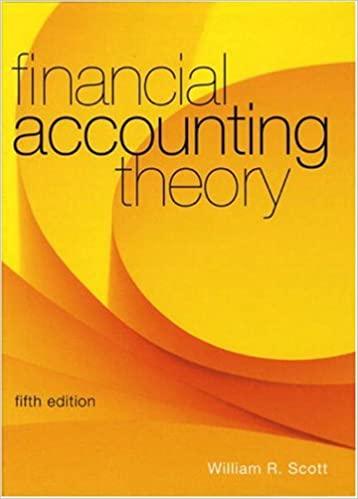The controversy over expensing of ESOs can be analyzed as a non-cooperative game. Let the two players
Question:
The controversy over expensing of ESOs can be analyzed as a non-cooperative game. Let the two players be the large, powerful corporations who wish to prevent expensing, and the standard setter. Each player faces two strategies. The “cooperate” strategy happens when a player accedes to the demands of the other, or, at least, expresses a willingness to compromise. One compromise, for example, could be to expense only ESOs granted to senior officers, with those granted to all other employees reported only as supplementary information. Another could be to delay an expensing decision to give time to work out a compromise. The “strong” strategy involves a player sticking to its own preferred policy and attempting to win support from business and government.
Hypothetical, but reasonable, payoffs for each player are summarized in the following table.

In each box, the first number represents the corporations’ payoff and the second number the standard setter’s payoff. Consider the lower left payoffs. Here, the corporations play strong, that is, they vigorously oppose expensing and proceed to gather support for their position from business and government. The standard setter backs down, as the FASB did in 1994, and allows all ESO expense to continue to be reported in the financial statement notes. The corporations’ payoff is 20 in this case, because it is seen as the dominant player. However, because this strategy erodes their relationship with the standard setter, generates political controversy, and alienates other constituencies who feel that standard setting should be done in the private sector, its payoff is less than the 30 it would receive if both players had cooperated to reach a compromise solution. The standard setter receives a very low payoff of 10, because it is perceived as capitulating to the corporations’
demands. If the corporations cooperate, however, and formulate a compromise, with payoffs of 30 each, the standard setter may seize on this as an expression of weakness and force through its preferred expensing option. Then, the standard setter’s payoff is 40, since it is seen as the dominant player, and the corporations suffer an embarrassing defeat with payoff of only 8.
If both parties play strong, no agreement is possible and the question of ESO expensing has to be settled by another authority, such as government.
Here, both parties lose, with low payoffs as shown in the lower right of the table.
Required
a. Given the payoffs as shown, which strategy pair do you predict the players will choose?
b. Is this strategy pair a Nash equilibrium? Explain.
c. Both parties would be better off if they cooperated. Explain why this strategy pair is unlikely to be chosen.
Step by Step Answer:






